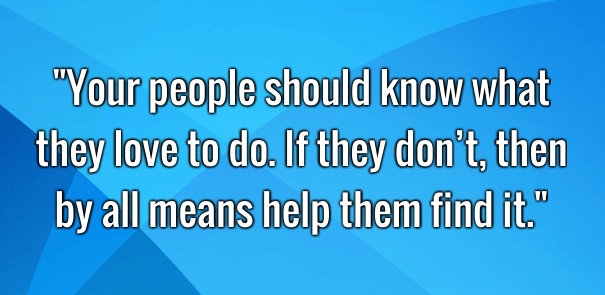Great leaders and great organizations don’t just happen.
I have had the opportunity to work and consult at high levels in the upper echelons of corporations, and I’ve been on the board of Luby’s/Fuddruckers since 2003. I can tell you unequivocally that I wouldn’t have gotten there without being mentored by men; men who did not see my success as a threat; men who placed the well-being of their organizations ahead of their own interests; unselfish people, all.
But there’s more: Mentoring was in the DNA of those organizations, and both I and the organization were benefactors.
If you want to build one of those organizations that are growing great leaders, here is a good place to start: It’s a formula that I have found for leadership success, a template if you will. It goes like this:
Purpose + passionate expertise + fearless work + visibility + recognition = leadership opportunities
Though I have never seen it officially put into this form, I know that it exists because I have seen it work in my own professional life. And, now I am experiencing it all over again and, in a way, living it vicariously through others as I interview top women leaders and write their stories in my new book, “Women Make Great Leaders.”
So, how does this formula and each of these elements play out in the everyday workings of a vibrant organization? Let’s take a look.
Purpose
The late Don Clifton, the inventor of the Gallup StrengthsFinder, was fond of saying, “Every one of us can do at least one thing better than 10,000 other people. That’s the good news. The bad news? Most people have no idea what that one thing is.”
The best organizations are deliberate and on-purpose about helping their people find their sweet spot, the thing(s) they do better than 10,000 other people. This takes time and effort. You can’t do this and just fill open roles with people without thinking about their purpose, their ‘why’ and their unique talents. Just think how much better organizations would be if people were in their strengths zone.
Passionate expertise
Your people should know what they love to do. If they don’t, then by all means help them find it. When they do, you’ll see a spark and great work will follow. It’s near impossible to be passionate when you are just killing time. But when you are doing something you love and it loves you back, time flies and excellence is the outcome.
Fearless work
As you can see, all of the elements of the formula strongly interconnect. People who have found their purpose and passion can’t stand on the sidelines while bad things happen in their organization. They are almost duty-bound to champion the causes that make their workplace better in every way. They are also willing to step into the gap and fill roles and do extra things until help comes along. And, they do all of this, not primarily because somebody is paying them to do it, but because they can’t not do it.
Wouldn’t you love to have a team of those people in leadership in your organization?
Visibility
Visibility is critical. You can do stellar work, but if it’s not visible, it can’t take you anywhere. But here’s the rub with public roles: there is always the possibility of very public failure.
Again, see how the formula works? People who have found their purpose, are exercising their passionate expertise, and are doing fearless work are, well, unafraid to step into those difficult but potentially rewarding roles. They have mentors and champions who have their best interest at heart and who really know them.
Those people wouldn’t intentionally send their mentee into trouble, would they? Not if all of this is part of the fabric of leadership. They’ll know better, and there will be a bond of trust that will give individuals the courage they need to take on difficult and very public tasks. Walking on the high wire is a lot less daunting when you have a safety net.
Recognition
Everybody loves a pat on the back for a job well done. Unfortunately that doesn’t happen often enough in most organizations.
Recognition should be systematic and sincere. Objective measurements should be in place to determine success or failure, and success should be openly rewarded on a regular basis.
Teach this formula in your training sessions and classrooms. Be intentional, and give leaders permission to find other potentially great leaders in your organization and give them a leg up. Encourage it and talk about it often.
If you do, you’ll find that success is not a zero-sum game, as it turns out.
Jill Griffin is an independent public board director; internationally published Harvard “Working Knowledge” author; and global thought-leader on customer loyalty. She is passionate about bringing more diversity to the corporate board room. Since 2003, Griffin has served as board director for Luby’s/Fuddruckers Restaurants.
She is a distinguished alumnus and philanthropist for the University of South Carolina Moore School of Business, where she earned her bachelor of science in business (magna cum laude) and MBA degrees. She served on the Board of Trustees for nine years. Her book “Customer Loyalty” has been published in eight languages. Two awarding-winning books followed: “Customer Winback” and “Taming the Search-and-Switch Customer.” Her most recent book is “Earn Your Seat on a Corporate Board.”
If you enjoyed this article, join SmartBrief’s e-mail list for our daily newsletter on being a better, smarter leader.
